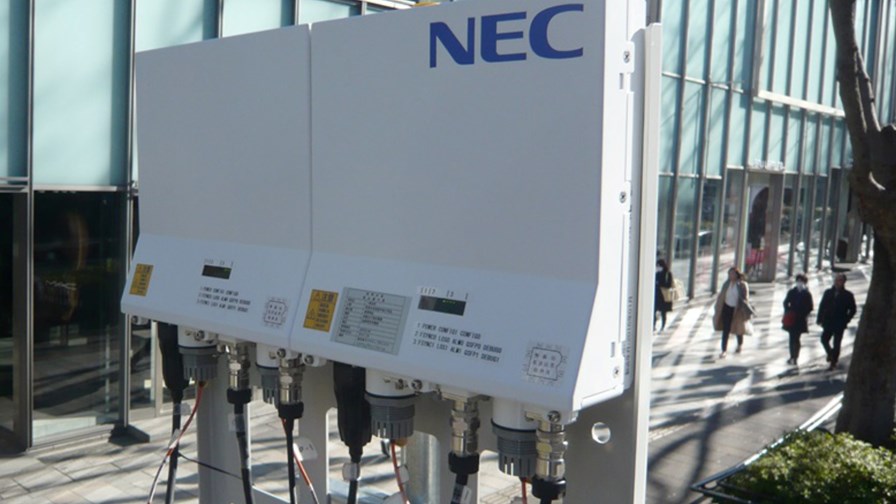
© NEC
- NEC and NTT Docomo conduct 5G base station verification trials
- Achieved spectral efficiency eight times higher than that of LTE
- Using low-band SHF frequencies between 3GHz and 6GHz
- Fully-digitised antenna beam control technology
NEC says it has completed joint verification trials with NTT Docomo using Massive Multiple Input Multiple Output (MIMO) technology for 5G base stations. The trials were conducted in central Tokyo and Kanagawa Prefecture and used NEC's massive-element Active Antenna System (AAS) supporting low-band SHF frequencies between 3GHz and 6GHz. The trials focused on both outdoor environments, where radio waves are reflected or diffracted due to buildings, utility poles, vehicles and people, and indoor environments, which also include obstacles such as columns and walls.
The addition of cmW and mmW frequencies to cellular operations with 5G leads to many complications and challenges for operators. For example, the higher the frequency, the shorter the wavelengths and the more susceptible they are to interference from objects and atmospheric conditions. Also, as frequency increases, so too does the demand for more antennas and more power, to maintain the signal gain performance that operators require. Hence the importance of MIMO technologies with their multiple antenna arrays. Beam-steering also helps compensate for the difficulties of using the higher frequencies.
NEC's solution adopts fully-digitised antenna beam control technology, which it says improves the precision of beam forming. While transmitting beams to the target mobile handsets, it is capable of forming beams that counteract interfering signals using multi-path techniques – in other words, also using indirect signals that are reflected due to obstructions. Combining direct and indirect waves can improve signal quality.
"Thanks to NEC's contribution on the massive-element AAS supporting the low-SHF band, we were able to achieve highly successful outcomes from the trials," said Takehiro Nakamura, Managing Director of the 5G Laboratory at NTT Docomo. "We expect NEC to continue pursuing high-speed, large-capacity communication using the low-SFH band and contributing to our commercialisation of 5G."
The tested solution enables concurrent communication with several handsets, even though they are close to each other. In the trials, NEC demonstrated that use of AAS can result in improved capacity and quality of communication between a base station and handsets, while confirming that spectral efficiency was reliably maintained at a level roughly eight times higher than that achieved by LTE in indoor environments.
"NEC research into core technologies for 5G, including the massive-element AAS and antenna beam control, will contribute to the successful roll-out of 5G in the near future,” said Nozomu Watanabe, General Manager, Mobile Radio Access Network Division, NEC. “Among the high frequency bands, we are working especially hard to put the low-SHF band into practical use, since it is expected to enter into commercial use around 2020."
Email Newsletters
Sign up to receive TelecomTV's top news and videos, plus exclusive subscriber-only content direct to your inbox.




